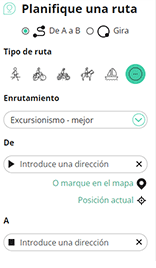The Oriental Institute , established in 1919, is the University of Chicago's interdisciplinary research center for ancient Near Eastern studies and archaeology museum. It was founded for the university by professor James Henry Breasted with funds donated by John D. Rockefeller, Jr. It conducts research on ancient civilizations throughout the Near East, including at its facility, Chicago House, in Luxor, Egypt. The Institute publicly exhibits an extensive collection of artifacts related to ancient civilizations at its on-campus building in the Hyde Park, Chicago community. According to anthropologist William Parkinson, the OI's highly focused "near Eastern, or southwest Asian and Egyptian" collection is one of the finest in the world.
In the early 20th century, James Henry Breasted built up the collection of the university's Haskell Oriental Museum, which he oversaw along with his field work, and teaching duties. He dreamed, however, of establishing a research institute, “a laboratory for the study of the rise and development of civilization”, that would trace Western civilization to its roots in the ancient Middle East. As World War I wound down, he sensed an opportunity to use his influence in the new political climate. He wrote to John D. Rockefeller, Jr., and proposed the foundation of what would become the Oriental Institute. Fundamental to the implementation of his plan was a research trip through the Middle East, which Breasted had optimistically, or perhaps naively, suggested was ready to receive scholars again after the disturbances of the war. Breasted received a reply from Rockefeller pledging $50,000 over five years for the Oriental Institute. Rockefeller also assured University of Chicago President Harry Pratt Judson that he would pledge another $50,000 to the cause. The University of Chicago contributed additional support, and in May 1919 the Oriental Institute was founded. The Institute is housed in an unusual Art-Deco/Gothic building at the corner of 58th Street and University Avenue, which was designed by the architectural firm Mayers Murray & Phillip. Construction was completed in 1930, and the building was dedicated in 1931. The early years of the institute also give background for the fictional archaeologist and adventurer Indiana Jones . Both Breasted and the OI archaeologist Robert Braidwood have been suggested as character models.
Fuente: Wikipedia.org
Derechos de autor: Creative Commons 3.0
![]() | | Pública | Alemán • Catalán • Español • Francés • Italiano • Neerlandés
| | Pública | Alemán • Catalán • Español • Francés • Italiano • Neerlandés
Cook, Estados Unidos
Descubre las rutas más bonitas y populares de la zona, cuidadosamente agrupadas y seleccionadas.
Descubre los lugares de interés más bonitos y populares de la zona, cuidadosamente agrupados y selecciondos.
Con RouteYou, es fácil crear tus propios mapas personalizados. Simplemente traza tu ruta, agrega puntos de ruta o nodos, agrega lugares de interés, lugares para comer y beber, y luego compártelo fácilmente con tu familia y amigos.
Planificador de rutas

<iframe src="https://plugin.routeyou.com/poiviewer/free/?language=es&params.poi.id=1472331&params.language=en" width="100%" height="600" frameborder="0" allowfullscreen></iframe>
Pruebe esta funcionalidad gratis con una suscripción de prueba RouteYou Plus.
Si ya dispone de dicha cuenta, conectarse ahora.
© 2006-2024 RouteYou - www.routeyou.com